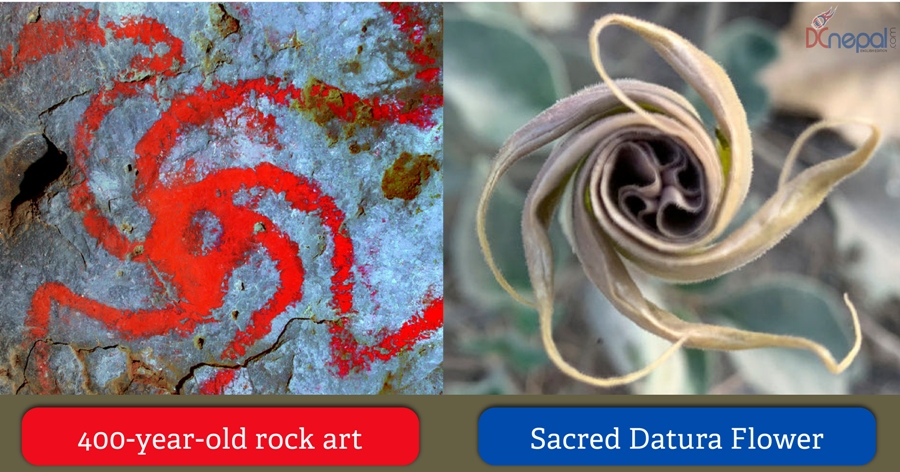Scientists unveil the truth behind native American rock art

A recent in-depth study of a rock cave art in California by the University of Central Lancashire along with the Archeology Department of the University of Southampton has shown that the native Americans living from five centuries ago used to gather in a cave, get high by chewing datura plant and draw rock arts.
The rock art, a pinwheel, resembled the patterns of the petals of the sacred datura flower.
The discovery breaks the long-debated hypothesis of the ‘altered states of consciousness’ that the makers of rock art may have been in a state of trance while painting.
There had been guesses that the drawings were vision experiences of the shamans after taking the hallucinogens. David Robinson, a lecturer in archaeology at the School of Forensic and Applied Sciences at the University of Central Lancashire in the United Kingdom, however, does not believe in the idea.
Robinson’s research shows that there are a few sites that might have been used for “vision quests” but the majority of rock art sites were places where people lived. The paintings, he said, were about communicating “the core belief systems” of the community that lived there. The pinwheel had been painted over and retouched several times, the study found.
According to the findings, the datura plant at that time was used as a part of adolescent initiations. The adolescents used to gather in a communal space and drink the solutions made from the roots of the Datura plant. The scientific study of the chewed materials found near the rock art indicated that the datura plants were used to make chewing stuff.
The link between the hallucinogens and the rock art not only shows the site as a linking source for creativity and inspiration but also as a core part of rituals and community gatherings.
Facebook Comment
latest Video
Trending News
- This Week
- This Month












